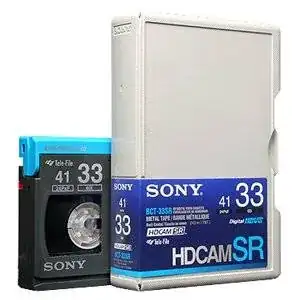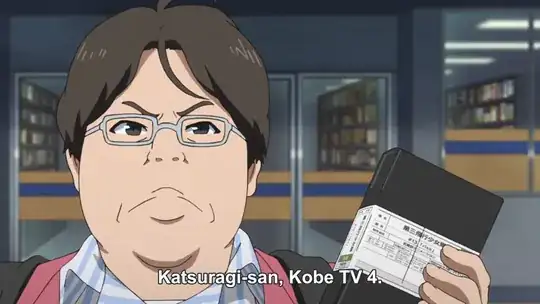So I went back to research following Ross Ridge's comment, and my answer is now:
Yes, they are still used (but a bit less since 2011-2012).
Basically, as networks and high-speed bandwidths are becoming more competitive, the transfer solution over internet is now the state-of-the-art regarding sending data to broadcasters. Dedicated solutions started appearing around 2011, and are being adopted progressively.
However, professional tapes are still the most popular means (as of 2016) to use as a master tape to give physically to broadcasters.
Effectively, animation software, such as RETAS STUDIO, takes care of network needs for in-house file circulation, then a professional tape recorder is used for the last steps of the post-production to "compile" everything, as you said.
As for possible reasons regarding why they have to give it physically in the anime:
- They are late so they don't have the time to send it by post.
- The FTP server was down in the anime so they had no other choice.
- Mark of respect and seriousness for the broadcasters.
- Reduced risk of leaking the episode if it was given by another means.
More details on the tape formats
Historically, anime studios mostly used D2-VTR tapes in the 90s-00s (SD quality), then progressively transitioned to newer formats.
Nowadays, the preference from the broadcasters' side basically dictates the expected format. Notably, the standard in the industry is HDCAM (1440x1080), whereas NHK is pretty much the only broadcaster to prefer having the master sent to them as a more recent and better HDCAM-SR tape.

Most anime studios, on the other hand, already upgraded to HDCAM-SR, which boasts compatibility with HDCAM, and so they can also be used to be sent to broadcasters regardless of whether the broadcasters use HDCAM or HDCAM-SR. However, a minority of studios cannot afford paying for a HDCAM-SR recorder, so they may prefer outsourcing the encoding to external companies such as IMAGICA or Sony PCL.
Regarding overseas broadcasters
The preferred solution is for the studio to edit out the black screen parts normally left for TV commercials, then capture the output content directly into HD data to be put onto a simple HDD with USB 3.0.
This is mainly due to HDCAM-SR being very costly, to the point of making it not worthwhile financially if it were to be used as a medium to send overseas. In addition, the great earthquake in Japan in 2011 destroyed the Sony factory where HDCAM-SR tapes were being manufactured, causing a shortage of tapes around the world. This event shaped the cost of the tapes, and so the process of how to send anime overseas at the time.
Nowadays, when there are requirements of simulcast, like for Crunchyroll or Funimation, the direct transfer solution is preferred, with software such as Aspera being the standard in the industry for fast file transfer (a normal anime episode may be around 37GB to send, whereas a special episode can easily go over 100GB).
More about shirobako
My previous answer revolved essentially around shirobako. I had some confusion (I give my thanks to Ross Ridge for pointing it out), so I will give a few more details about it to correct myself, but nevertheless leave the contents of my previous answer here.
As told in the anime, "shirobako" is historically a tape inside a white box. This medium is given to the studio staff so they can do a final check for errors before the master tape (the HDCAM-SR I previously talked about) is sent to the broadcaster. However, the term shirobako is also sometimes used to talk about the master tape.
This actually comes from the fact that shirobako are generally HDCAM-SR tapes, which usually come in white-ish grey boxes (like the picture above), the same as the tapes used to send to the broadcaster!
However, a trend of using DVD-R for shirobako seem to have started somewhere around 2007, and so the "white box" characteristic was no longer relevant.
A shirobako nowadays
On a final side note: boxes for HDCAM are typically black-ish grey, so the tape in the screenshot from the question is most likely a HDCAM tape.
Sources:

